Anna Sayburn Lane's Blog, page 6
September 5, 2022
Book launch for Folly Ditch
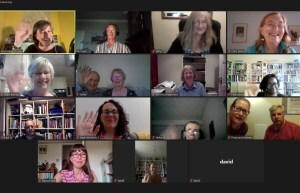 I had fantastic fun being interviewed and answering readers’ questions at the online launch party for my new book, Folly Ditch. The video for the launch is online now on my YouTube Channel: https://www.youtube.com/watch?v=fhaTp9gTrzA
I had fantastic fun being interviewed and answering readers’ questions at the online launch party for my new book, Folly Ditch. The video for the launch is online now on my YouTube Channel: https://www.youtube.com/watch?v=fhaTp9gTrzA
August 8, 2022
Join my launch party for Folly Ditch
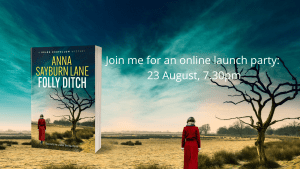 Join me for the online launch party on Tuesday 23 August at 19:30 BST. I’ll be reading from the book, taking part in a Q&A with journalist Kathy Oxtoby, and answering questions from readers. There will be at least one giveaway during the event. You can access the event with this link.
Join me for the online launch party on Tuesday 23 August at 19:30 BST. I’ll be reading from the book, taking part in a Q&A with journalist Kathy Oxtoby, and answering questions from readers. There will be at least one giveaway during the event. You can access the event with this link.
August 3, 2022
Who was Nancy?
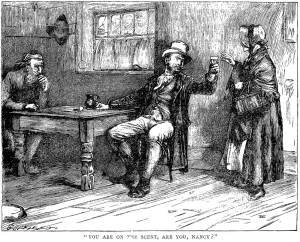 Fagin, Sikes and Nancy, by James Mahoney
Fagin, Sikes and Nancy, by James MahoneyCharles Dickens told his biographer that Nancy in Oliver Twist was based on a real woman. But who was she?
The character is a ‘fallen woman’, part of Fagin’s gang and the lover of the burglar Bill Sikes. When we first meet her, she and her friend Bet are described as ‘not exactly pretty, perhaps, but they had a good deal of colour in their faces, and looked quite stout and hearty. Being remarkably free and agreeable in their manners, Oliver thought them very nice girls.’
Dickens doesn’t tell us exactly what Nancy does, but the description hints at prostitution. She has no police record, however, and is able to go to the magistrate court unrecognised to see Oliver’s trial for pickpocketing. It’s Nancy who comes up with a plan to kidnap Oliver off the streets. But she has a change of heart, protects the boy from Bill when he threatens to beat him, and eventually goes to Oliver’s benefactor to warn him of danger to the boy.
Although she is offered a chance to ‘go straight’ she prefers to go back to the only life she knows, out of loyalty to her friends. That fatal act, however, is seen as a betrayal that Bill Sikes cannot forgive.
A few years ago, another author found a report of a murder case where a woman was killed in circumstances similar to Nancy, shortly before Dickens wrote Nancy’s death. But Dickens did not know the murdered woman, although he probably heard about her death and may have used it while writing Oliver Twist. So who was Nancy?
We don’t know, and we probably never will. But that little mystery was enough to spark my imagination – and get me started on the novel that became Folly Ditch.
I made a little video of some of the ways in which Nancy has been depicted – view it here.
July 25, 2022
Charles Dickens, villains and the criminal underworld
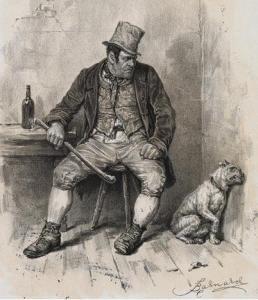 Bill Sikes and Bullseye, by Fred Barnard.
Bill Sikes and Bullseye, by Fred Barnard.Charles Dickens started his career as a newspaper reporter, and wrote about social issues throughout his life. That’s one of the things that attracted me to his novels – and inspired my new novel, Folly Ditch.
The world of Oliver Twist, with criminal gangs, children in danger and vicious thugs exploiting the most vulnerable, may seem like a long-gone historical era. But when I thought about some of the stories in the news now, I began to see parallels. Fagin and Bill Sikes would fit right in with today’s people traffickers, gang-masters and county lines drugs operators.
I wanted to explore those parallels, to look at how the criminal underworld that Dickens wrote about lies just below the surface of today’s Britain. The result is Folly Ditch, in which Helen Oddfellow’s investigations into a brutal Dickensian-era murder lead her to some very twenty-first century criminals.
A ‘good villain’ is essential for a decent thriller or crime novel, and Dickens created some of the best. He began his career writing for newspapers, where he no doubt heard about plenty of thugs, conmen, swindlers and murderers. My own experience as a newspaper reporter certainly helped when it came to creating some villains of my own. And when I began writing Folly Ditch, I found myself drawn back to a character from my first novel, described by one reader as ‘terrifyingly convincing’.
The key to creating a good villain, as a writing tutor once told me, is to remember that every villain thinks they’re the hero. Something that Dickens, I’m sure, kept in mind when writing his swaggering, thuggish burglar, Bill Sikes.
June 17, 2022
Coming soon: Folly Ditch, the next Helen Oddfellow mystery thriller
A Dickensian murder mystery. A brutal modern-day gang. Can Helen Oddfellow outwit an old enemy – or will she be his next victim?
When literary researcher Helen Oddfellow finds an old newspaper clipping in an antiquarian bookshop in Rochester, she uncovers a Dickensian murder mystery. But her quest to solve the puzzle takes a dangerous turn when the bookshop owner disappears.
The 200-year-old report of a woman’s murder on the steps of London Bridge provides clues to the real-life inspiration for Nancy, one of Charles Dickens best-loved characters. As Helen investigates, she discovers the woman died because she knew a secret that the British establishment was intent on covering up. Now Helen knows… and the secret is still alive today.
Helen teams up with the booksellers’ distraught teenage daughter, and enlists help from a charming businessman who seems to have more than a passing interest in Helen herself.
As they follows the dead man’s trail, Helen discovers that the eerie marshes of north Kent are home to a modern-day criminal gang more brutal than anything Dickens dreamed up. On the bleak shore of the Thames estuary, she comes face to face with an old enemy . Can she keep Nancy’s secret from him, without sharing her fate?
Expected publication: August 2022
Long-listed for the Stockholm Writers Festival’s First 5 Pages prize.
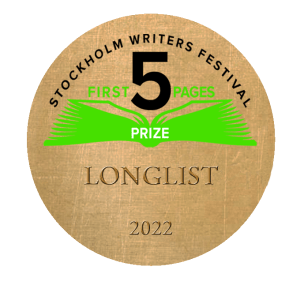
April 7, 2022
Dead Men in Deptford: an audio-tour of Deptford’s Literary History
 I had a great time recording an audio-tour, Dead Men in Deptford, to celebrate Deptford Literature Festival in March 2022. The tour takes in local literary types from Christopher Marlowe to Charles Dickens, diarists Samuel Pepys and John Evelyn, Joseph Conrad and Anthony Burgess.
I had a great time recording an audio-tour, Dead Men in Deptford, to celebrate Deptford Literature Festival in March 2022. The tour takes in local literary types from Christopher Marlowe to Charles Dickens, diarists Samuel Pepys and John Evelyn, Joseph Conrad and Anthony Burgess.
The tour is still online, so you can listen in, download the map and transcript, and visit yourself – or just listen in and imagine the scenery!
October 21, 2021
Talks, readings and conversations: my new video channel
Would you like to hear me read from my novels? How about listen in on conversations with creative friends, or watch an online talk about the books? I’ve set up a new channel to host all my video content.
You can:
Listen to me talk to musician Katie Rose about how the changing seasons affect the way we workHear me read the opening chapters of Unlawful Things, The Peacock Room and The Crimson ThreadWatch an online talk about the history behind Unlawful ThingsI’ll be adding more content as I go, so why not subscribe to make sure you get an alert when I add something new?
October 8, 2021
Introducing my Creative Year conversations
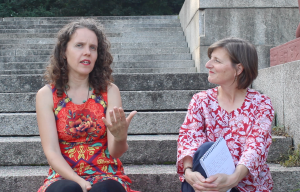 Anna and Katie chat in Crystal Palace Park
Anna and Katie chat in Crystal Palace ParkFor a while, I’ve been thinking about how the turning of the seasons affects the way I write.
In spring, I’m full of ideas. There’s energy, there’s a sense of possibility; every conversation or contact seems to spark a new project or plan. Come summer, some of those projects need sunshine, feeding and attention, while others have to be weeded out. In autumn, I’m starting to see some of the ideas ripen into chapters, stories, novels. There’s a ‘back to school’ energy about the crisp air, a willingness to get back to the desk. Winter is quieter, often a time to finish a first draft or start work on edits, polish and shape my work from the warm cocoon of my study.
I wondered if other creative types also feel a seasonal rhythm to their work, so I’ve begun what I hope will be a series of Creative Year conversations. First up is the amazing Katie Rose, a singer, conductor, composer and writer who loves to sing, and to help people sing. I was lucky enough to sing with Katie’s aptly-named Welcome Choir in London over the past few years.
Katie released a new album of jazz-influenced songs, Flame, this July. We talked about what’s inspiring her right now, the creative process, ‘squirrel season’ and current projects. You can listen on my YouTube channel here. And do check out Katie’s website, The Rose Window, for news of her music and other projects.
July 14, 2021
A trip to Doughty Street
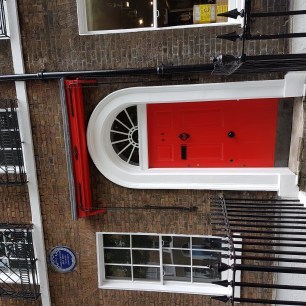 48 Doughty Street, the Charles Dickens Museum.
48 Doughty Street, the Charles Dickens Museum.The inspiration for the next Helen Oddfellow mystery is Charles Dickens, the great London novelist. I took a trip to the Charles Dickens Museum in Doughty Street, Bloomsbury, where Dickens lived with his with Catherine and young family from 1837 to 1839.
The three-storey house was, as Dickens wrote of it, ‘a frightfully first-class Family Mansion, involving awful responsibilities’.
For a recently-married young journalist aged just 24, with a baby son and a second child on the way, taking a lease on Doughty Street was an ambitious statement of intent, especially as he had only recently begun to establish himself as a successful writer.
Certain rooms of the house are set up as they might have been when Dickens and his family lived there in the first years of Queen Victoria’s reign. These include the dining room, its table set for a merry dinner – Dickens famously loved to entertain – and the study, with a desk used by Dickens towards the end of his life. Here you can see pages of hand-written manuscripts from some of the novels, and pity the compositor and printer who had to make sense of the close-written handwriting.
Upstairs, the Dickens’ bedroom is made cosy with the slipper bath in front of the fire and a four poster bed. Next to it, a poignant reminder of the tragedy that struck the young family. Mary Hogarth, Catherine’s young sister, stayed with them often, and was a great friend of both. She died suddenly, aged just 17, having been taken ill after a trip to the theatre. The room in which she died is laid out as if for her return, with a white night dress across the bed. Dickens was grief-stricken, missing deadlines for the first and last time in his life. Mary soon made an appearance in his fiction, an inspiration for the saintly Rose Maylie in Oliver Twist.
The museum has an exhibition about Oliver Twist at present, and a map of the area of London around Doughty Street shows how Dickens drew on his surroundings when writing his serial novel. Fagin’s gang of child thieves were located in Saffron Hill, a short walk east and richly detailed in the novel. The kindly Mr Brownlow lived a little north of Bloomsbury in a villa in Pentonville. Oliver realises the nature of Fagin’s business when he witnesses the Artful Dodger pick a pocket at a book stall in bustling Clerkenwell Green.
I finished my visit by downloading an audio guide from the museum, which took me on a tour of the streets around the museum. From spotting ornate coal holes on the pavement, to considering the significance of Victorian boot scrapers outside houses on James Street, a peek into Doughty Mews and the parish markers denoting the boundary between parishes next to the Lamb pub in Lamb’s Conduit Street, it’s a fascinating glimpse into what remains of London’s past. I thought I knew these streets pretty well – but it showed me plenty that I had overlooked.
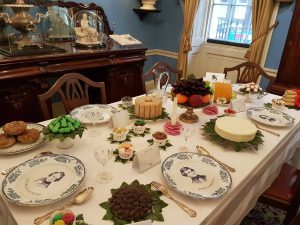
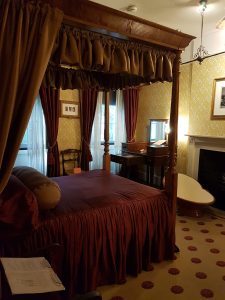
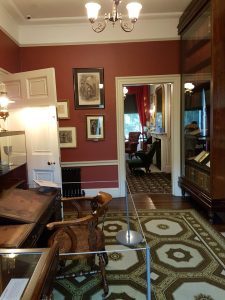
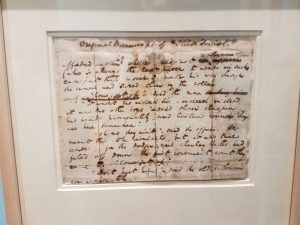
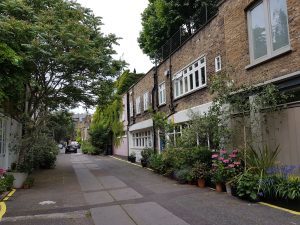
May 7, 2021
The Crimson Thread: out now
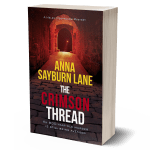 The third Helen Oddfellow mystery takes Helen out of London, to the cathedral city of Canterbury in Kent. Helen is expecting an exciting night out at the theatre – but things quickly become a bit too exciting for comfort.
The third Helen Oddfellow mystery takes Helen out of London, to the cathedral city of Canterbury in Kent. Helen is expecting an exciting night out at the theatre – but things quickly become a bit too exciting for comfort.
A bloody curse, a (fresh) body in the cathedral crypt and a choirboy in peril make for a night at the theatre that Helen won’t forget. Helen will need all her intelligence and bravery to navigate the secrets of Canterbury cathedral and its tombs. But can she catch a killer – before he strikes again?
You can buy an e-book for 99p over here, or get an e-book free when you sign up to my newsletter here. Paperbacks cost £6.99 and can be purchased here.



